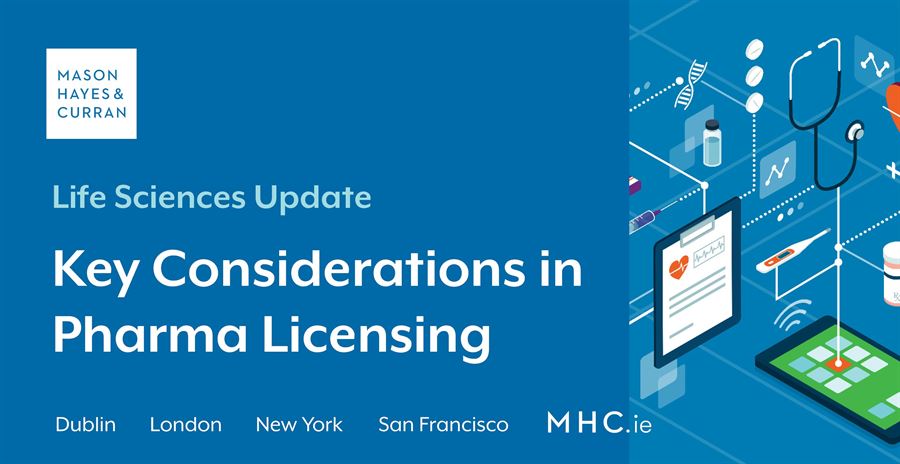
Collaboration, whether in development or commercialisation, is a critical component in bringing new pharmaceutical or biotech products or devices to the market. These collaborations assist in getting products to the market quicker while reducing both the risk and cost of development. This article outlines some of the key considerations when licensing IP in a life sciences collaboration.
Licensed IP
It is important to specifically identify what IP is being licensed. Careful consideration should be given to whether any future improvements of the IP are included in the licence. If licensing improvements, a licensor should ensure that there are no restrictions which could impact its ability to grant a licence to such improvements.
Exclusive
A key consideration is whether the licence of the IP is exclusive, semi-exclusive or non-exclusive. This should form part of the commercial discussions between the parties. For an academic institution, it may wish to retain the right to use the licensed IP for academic purposes.
Field of use
It is common to include a field of use provision in a licence which limits the licensee’s rights to the licensed IP. Such limitations can be based on therapeutic indication or method of administration. A licensor will want the most narrow field of use while the licensee will want the broadest field of use. This debate will be influenced by the current stage of development of the IP and the field of development which is being committed to by the licensee.
Net sales
Generally, a licensor seeks a royalty on the net sales of products which utilise the licensed IP. It is therefore important to specify how this net sales amount is calculated, including what deductions may be made from gross sales to calculate net sales. A licensor may wish to restrict what deductions can be made or to insert an overall cap on these deductions, particularly around discretionary rebates and discounts. A licensor should also include a right to audit the calculation of royalties based on net sales.
Commercialisation
Commercialisation obligations on a licensee can range from using “commercially reasonable efforts” to the requirement to achieve specific milestones by certain dates. A licensor will look for specific milestones in order to incorporate a related right of termination. A licensee, having incurred development significant costs, will not want to lose rights to the licensed IP because of unforeseen delays. A balanced approach which recognises both parties’ concerns should be reflected in the licence.
Conclusions
The licensing of IP in life science collaborations can bring significant rewards for licensors and licensees, as well as for patients who can benefit from the development of new treatments. Such licences can be of significant value, duration and complexity. Whether acting as a licensor or licensee, it is important to fully understand the key considerations for the licence and to ensure same are clearly documented.
For more information and expert guidance on bringing new pharmaceutical or biotech products or devices to the market, contact a member of our Life Sciences team.
The content of this article is provided for information purposes only and does not constitute legal or other advice.





